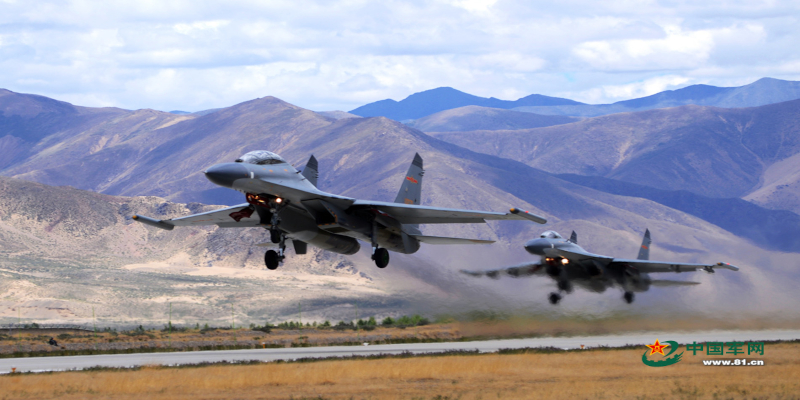Dharamshala, 25th July: There is a lot going on in the Indian subcontinent right now. Much of it has something to do with China in some way. The Chinese are building military barracks in the Chumbi Valley as if to formally counter India’s red line drawn there during the Doklam standoff in 2017 (this short valley goes north from Siliguri’s Chicken’s Neck, between Sikkim and Bhutan, onto the Tibetan plateau).
Tibet is the largest, coldest, and most inhospitable portion of our globe outside of the poles, and moving, lodging, and supplying troops is a back-breaking endeavor in itself. Therefore, much of the attention is focused on airfields and air traffic control systems. For troops on the ground and for air operations and air defense forces in such an environment logistics is just as important, if not more important than fighting.
The Tibetan plateau is ringed by seventeen Chinese airfields in the region. Five of them are in Xinjiang province’s Tarim Pendi, north of the plateau. One, Golmud, is in Qinghai province’s Tsaidam Basin, immediately to the northeast of the plateau; and the other, Yushu, is east-centrally on the plateau, in a valley opposite the Yangtse Kiang’s upper waters.
That leaves ten airfields in the vicinity of our mountain ranges. Taxkorgan, Ngari-Gunsa, Burang, Tingri, Shigatse, Lhasa-Gonggar, Damxung, Lhuntse, Nyingchi, and Bangda are located in an arc running over the Karakoram and Himalayan ranges, from west to east.
Except for Nyingchi and Taxkorgan, all airfields are located well above 10,000 feet. Because planes taking off from such altitudes can only carry a fraction of their entire load, their military utility is debatable. Nonetheless, they are present on our northern borders.
Perhaps the Chinese construction of new airfields, as well as expansions of existing ones, is a knee-jerk reaction to our own beefing up of border infrastructure over the last decade; or perhaps it is posturing; or perhaps they mean business and need more landing grounds to deliver men and supplies, as the road route across the plateau is far too long, torrid, and exposed for words. The bottom line is that we have no idea.
There are also hundreds of other Chinese airfields to the north and east that could be used in the event of a confrontation, not to mention static and mobile missile systems for both assault and air defense, which is the other simmering component.
Image Courtesy: claudearpi.blogspot.com

